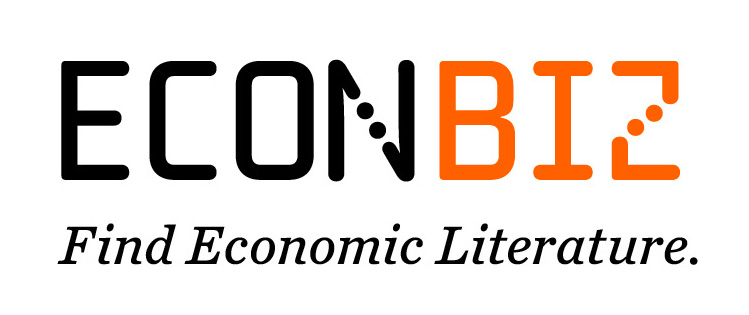| ISSN | 2615-9813 |
| ISSN (số cũ) | 1859-3682 |
Số 231 | Tháng 6/2025
Tác động của phát triển bền vững đến hiệu quả tài chính: Doanh nghiệp niêm yết tại Việt Nam
Bùi Đan Thanh, Nguyễn Ngọc Huyền, Phan Thị Hiên
Tóm tắt:
Trong bối cảnh doanh nghiệp đối mặt với áp lực ngày càng lớn từ các bên liên quan về trách nhiệm xã hội và môi trường, phát triển bền vững (PTBV) đã trở thành xu thế chiến lược tại Việt Nam. Nghiên cứu này áp dụng phương pháp hồi quy sai biệt kép (Difference-in-Differences – DiD) để đánh giá tác động của PTBV đến hiệu quả tài chính (HQTC) thuộc 147 doanh nghiệp niêm yết giai đoạn 2016–2024, với nhóm PTBV được xác định theo bảng xếp hạng từ Liên đoàn Thương mại và Công nghiệp Việt Nam (VCCI) năm 2020. Kết quả cho thấy tỷ suất sinh lời trên tổng tài sản (ROA) và tỷ suất sinh lời trên vốn chủ sở hữu (ROE) của nhóm PTBV có xu hướng giảm sau khi được công nhận và biến PTBV không đạt ý nghĩa thống kê. Trong khi đó, các yếu tố nội tại như tỷ lệ vốn chủ sở hữu trên tổng nguồn vốn (EAR) và tỷ lệ tài sản ngắn hạn trên nợ ngắn hạn (QR) có ảnh hưởng cùng chiều đến ROA. Nghiên cứu cung cấp bằng chứng thực nghiệm tại Việt Nam, từ đó đưa ra hàm ý cho nhà quản trị về việc lựa chọn thời điểm và cách thức triển khai chiến lược PTBV phù hợp.
Tài liệu tham khảo:
- Angrist, J. D., & Pischke, J. S. (2009). Mostly Harmless Econometrics: An Empiricist’s Companion. Princeton University Press.
- Booth, L., Aivazian, V., Demirguc-Kunt, A., & Maksimovic, V. (2001). Capital structures in developing countries. The Journal of Finance, 56(1), 87-130.
- Brealey, R. A., Cooper, I. A., & Habib, M. A. (2020). Cost of capital and valuation in the public and private sectors: Tax, risk and debt capacity. Journal of Business finance & accounting, 47(1-2), 163-187.
- Carroll, A. B., & Shabana, K. M. (2010). The business case for corporate social responsibility: A review of concepts, research and practice. International journal of management reviews, 12(1), 85-105.
- Eccles, R. G., Ioannou, I., & Serafeim, G. (2014). The impact of corporate sustainability on organizational processes and performance. Management science, 60(11), 2835-2857.
- Edmans, A. (2011). Does the stock market fully value intangibles? Employee satisfaction and equity prices. Journal of Financial economics, 101(3), 621-640.
- Eljelly, A. M. (2004). Liquidity-profitability tradeoff: An empirical investigation in an emerging market. International Journal of Commerce and Management, 14(2), 48-61.
- Elkington, J. (1997). Cannibals with forks: The triple bottom line of 21st century business. Capstone Publishing.
- Freeman, R. E. (2010). Strategic management: A stakeholder approach. Cambridge university press.
- Friede, G., Busch, T., & Bassen, A. (2015). ESG and financial performance: aggregated evidence from more than 2000 empirical studies. Journal of sustainable finance & investment, 5(4), 210-233.Angrist, J. D., & Pischke, J. S. (2009). Mostly Harmless Econometrics: An Empiricist’s Companion. Princeton University Press.
- Friedman, M. (1970). of Business is to Increase its Profits. New York Times Magazine, September 13, 122-126.
- Global Reporting Initiative (2021). GRI Standards. https://globalreporting.org/pdf.ashx?id=12334
- Jensen, M. C. (1986). Agency costs of free cash flow, corporate finance, and takeovers. The American Economic Review, 76(2), 323-329.
- Lê Huy Huấn, Lê Hoàng Ngân, Nguyễn Anh Tùng, Trần Hương Lam, Trần Yến Trang. (2025). Tác động của các tiêu chuẩn bền vững (ESG) đến hiệu quả tài chính của các doanh nghiệp niêm yết tại Việt Nam: Bằng chứng từ phương pháp hồi quy dữ liệu bảng. Tạp chí Kinh tế và Phát triển, (333 (2)), 13-22.
- Lozano, R. (2015). A holistic perspective on corporate sustainability drivers. Corporate social responsibility and environmental management, 22(1), 32-44.
- Malesky, E. J., Nguyen, C. V., & Tran, A. (2014). The impact of recentralization on public services: A difference-in-differences analysis of the abolition of elected councils in Vietnam. American Political Science Review, 108(1), 144-168.
- Margolis, J. D., Elfenbein, H. A., & Walsh, J. P. (2009). Does it Pay to Be Good...And Does it Matter? A Meta-Analysis of the Relationship between Corporate Social and Financial Performance (March 1, 2009). Available at SSRN: https://ssrn.com/abstract=1866371 or http://dx.doi.org/10.2139/ssrn.1866371.
- Modigliani, F., & Miller, M. H. (1958). The cost of capital, corporation finance and the theory of investment. The American Economic Review, 48(3), 261-297.
- Nguyễn La Soa (2023). Tác động của công bố trách nhiệm xã hội đến phát triển bền vững và hiệu quả hoạt động: Nghiên cứu với các doanh nghiệp khai khoáng Việt Nam. Tạp chí Kinh tế & Phát triển, số 311, tháng 5/2023, 85-94.
- Nguyễn Thị Thu Nguyệt (2020). Ảnh hưởng của thông tin phát triển bền vững đến hiệu quả hoạt động của doanh nghiệp. Tạp chí Kế toán & Kiểm toán số 9/2020, 59-63.
- Penman, S. H. (2016). The design of financial statements. Center for Excellence in Accounting & Security Analysis.
- Phan Thị Minh Huệ (2024). Công bố trách nhiệm xã hội và hiệu quả tài chính: Tiếp cận theo hồi quy Bayes. Tạp chí Kinh tế và Ngân hàng châu Á, số 217, tháng 4/2024, 5-10.
- Porter, M. E., & Kramer, M. R. (2011). How to reinvent capitalism — and unleash a wave of innovation and growth. Manag Sustain Bus, 323.
- Richard, P. J., Devinney, T. M., Yip, G. S., & Johnson, G. (2009). Measuring organizational performance: Towards methodological best practice. Journal of Management, 35(3), 718-804.
- Velte, P. (2017). Does ESG performance have an impact on financial performance? Evidence from Germany. Journal of global responsibility, 8(2), 169-178.
- Vietnam Chamber of Commerce and Industry (VCCI) (2022). Bộ chỉ số doanh nghiệp bền vững (CSI) 2022. https://vbcsd.vn/csi.
- Wooldridge, J. M. (2013). Introductory Econometrics: A Modern Approach (5th ed.). South-Western Cengage Learning.
The Impact of Sustainable Development on Financial Performance: Listed Companies in Vietnam
Abstract:
In the context of increasing pressure from stakeholders regarding social and environmental responsibilities, sustainable development (SD) has become a strategic trend among businesses in Vietnam. This study applies the Difference-in-Differences (DiD) method to evaluate the impact of SD on the financial performance of 147 listed companies during the period 2016–2024, with the SD group identified based on the 2020 VCCI sustainable business ranking. The results show that, after being recognized as sustainable, the ROA and ROE of these firms tend to decline, and the SD variable is not statistically significant. Meanwhile, internal financial factors such as the equity-to-total assets ratio (EAR) and the quick ratio (QR) have a positive impact on ROA. The study provides empirical evidence from the Vietnamese context and offers managerial implications for selecting the appropriate timing and approach to implementing SD strategies.







